When it comes to microphones, there are a thousand flavors. While some manufacturers seek to advance the state of the art, others work to recreate the classic designs of the 1940s, 50s, 60s and 70s.
It goes to show that new isn’t always synonymous with better. Look no further than the popularity of various plugins that model the tonality (i.e., distortion and other imperfections) of tape machines. The plugins – and even the use of actual tape machines themselves – are intended to “enhance” digital recordings. There was a certain sound during those formative years, when music seemed to change the world, that is still sought after today, even though technology was nowhere near as advanced.
So we reach backward in time to validate our present experience, maybe never even knowing precisely why we do it. But we know how to do it, and one key method is to utilize the mics of yesteryear that made so many concerts, and so many recording projects, become the legends that still set a benchmark today.
Changing Color
While vintage mics are coveted, and some command a king’s fortune, old usually means maintenance. Parts may not always be available, and/or are no longer built to the exacting standards they once were.
A little known fact: mic diaphragms, especially the super-thin low-mass condenser types, will develop microscopic holes over time, eventually leading to a change in tonal color. As the years progress, the holes can even be seen with a magnifying glass. So know that they may still work and sound great, but don’t expect them to retain their original sound some 40 or 50 years later.
Also realize that the sound of a mic is not the result of its frequency response alone, but rather, is characterized by multiple factors. Phase versus frequency response, distortion characteristics, transient response (how fast the mic responds to acoustic energy and how quickly it stops outputting electrical energy after the acoustic event has ended), polar response, and linearity all play a role in how a given mic will sound, as well as how it can effectively be deployed.
And, of course, there’s the issue of the physical obstruction that the mic itself presents to the acoustic source. Obviously, mic’ing a 90-piece orchestra from 30 feet away is not going to alter much of anything, but placing a large-format condenser within inches of a violin not only adds an acoustic obstruction that’s picked up by the mic, but can also affect what the musician hears from the instrument. Hence the huge range of designs that are available for hundreds of different applications.
Inspired (Or Not)
Putting the left-brain analysis aside for a moment, there are certain mics that just make us feel good when we record or reinforce vocals and music. Whether our opinions are derived by carefully examining the technical characteristics of a mic or by simply determining what we like through trial and error (or both), the result is the same: some mics inspire, others do not.
One particular gem is the Shure SM7. Originally designed for broadcast applications about 40 years ago, it was quite popular and then gradually started fading away. But at a recent trade show, I spoke with a member of the Shure team who told that the mic is not only still alive and well, but increased orders for it are rolling in.
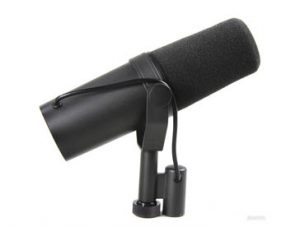
This was welcome news because I’ve long loved the SM7. It’s a good choice for obtaining a compelling snare tone – accurate for sure, but with a fat-and-rich quality that can’t be easily be duplicated, even with a lot of EQ. True, it’s large and so sometimes gets in the way of a crowded kit, but if it’s too big for your drummer’s liking, put it on kick. It’ll give you tight and punchy, or large and boomy, depending on placement, drum tuning, and EQ.
In addition, an SM7 on each side of a Leslie, about center height between the rotors and a foot or two away from the cabinet, captures a phenomenal stereo sound that brings out the best of this strange but wonderful breed of loudspeaker. If you can isolate the Leslie in a small backstage room, or even in a van outside the venue, so much the better.
Old Bugaboo
Another favorite for bass amplifiers is the Sennheiser MD 441, a mic that’s rarely used for this purpose. (Not the 421, mind you, but the 441.)
Years ago, working front of house at a reggae festival at Pauley Pavilion in LA, we had an A-team of stage techs and an A-plus inventory of active and transformer isolated DIs, but something was seriously amiss with the power distro, causing a 60 Hz hum from the bass DI that could not be chased down.
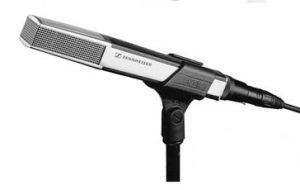
So we tried a variety of mics on the bass amp and it was still a far cry from acceptable. This was a big-money gig in a 14,000-seat arena, and no one was feeling too good about the situation.
Finally, my counterpart on stage placed the only suitable mic we hadn’t yet tried on the next act’s bass rig, and suddenly, it all came together. You guessed it – a 441.
For the rest of the festival we used it, and no matter the amp or playing style, we got what we needed – and in most cases way more than we would have reasonably expected. The bottom end of the music came through with the power that made the packed house of reggae fans as happy as… well, only reggae fans can be.
Making A Difference
Here are a few more things I’ve noted over the years. The beyerdynamic M160 ribbon mic is amazingly clean and clear when capturing the high end of orchestra bells, cymbals, clapsticks, Native American rattles, and other upper-frequency instruments. The definition in the high end is better – to me – than most condensers, especially large-diaphragm types, and the sweetness is unsurpassed.
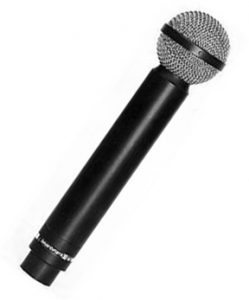
Neumann KM 85s as overhead mics on a trap kit, or used with percussion toys, sound significantly different than KM 84s, though physically they are nearly identical. The built-in mechanical LF roll-off in the KM 85, at about 150 Hz, means that the mic preamp isn’t being hit with broadband energy that will be filtered out later. (And yes, this does make a difference.)
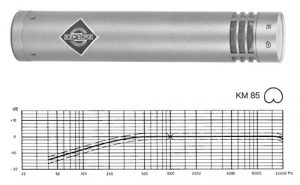
Applying multiple types of mics to kick, snare, guitar amp, and maybe even saxophone and trumpet, provides another set of tools to work with beyond EQ, plug-ins, and effects. For example, employing a large-diaphragm mic such as an MD 421 at the sound hole at the front head of the kick drum, and a small, rapid-response mic like a Shure Beta 91A inside the drum shell – on another input channel of course – offers a vast range of tonal possibilities merely by adjusting fader levels. This makes it very easy to change the character of the instrument on the fly, even during a single tune, to best suit the music.
For podium mics that sound like handhelds (and who wouldn’t want that?), Schoeps cardioid and hypercardioid models are fantastic. They’re small and unobtrusive, and seem to defy the normal constraints of physics in terms of gain-before-feedback, with a full, rich timbre.
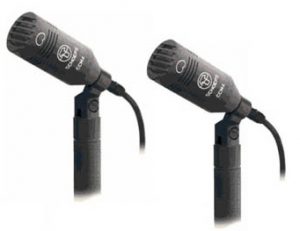
Worthy Of Respect
It’s also important to not be afraid of straying “off the beaten path” because of unfamiliarity. After working a number of classical and operatic shows in Scandanavia with Lars Wern of EM Nordic, one of the great mix masters of all time, I came to respect the Milab microphone portfolio. Lars and I did Handel’s “Messiah” in a 16,000-seat arena in Norway with a 5,000-voice choir from the World Federation Choir, as well as a 60-piece orchestra, all mic’d with various Milab models.The quality was impeccable.
That same year we did the 90th anniversary show of the Nobel Prize Awards, and later, a Christmas show featuring soprano Dame Kiri Takanawa. Both were held in the fabulous Globe Arena in Stockholm with large orchestras. Again all mics were Milab – and again, nothing less than superb results.
Whenever you have available time, don’t hesitate to try a second, third, or even a fourth mic on a given instrument. In this way, you can compare it to your go-to selection in real time, at a real event (or at least at a sound check). You may just find some surprising results.




















